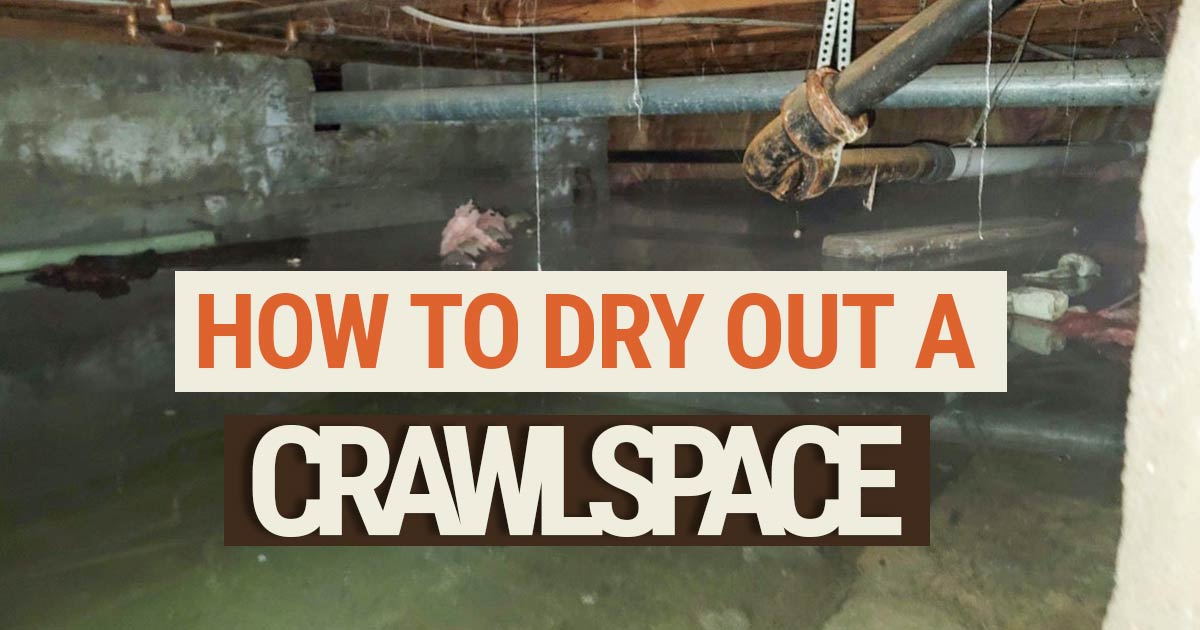512.291.0709
Mon - Fri: 9 AM - 11:30 AM
12:30 PM - 4 PM
May 18, 2023

Winter often brings flooding to areas of Texas, and this season has been no different. With recent storms battering parts of the state, many of us are on high alert. Even if flooding is not disastrous, there can still be enough water to pool in the crawlspaces beneath our homes.
If this happens to you, it’s important to get your crawlspace dried out as soon as possible. We’ll help you understand the problems that can come with a wet crawlspace, and outline an easy process for drying it out quickly.
Out of sight, out of mind, right? Not so much when it comes to wet crawlspaces. Having water collect and sit in this area of your home can cause a lot of damage in little time, especially if the ventilation is sub-par.
This damage can include, but is not limited to:
Some homeowners make the mistake of thinking that they can just wait for the soil to absorb the excess water. The problem with this logic is that when conditions allow for flooding, it usually means that the ground soil is already oversaturated with water. It will take quite a while for the groundwater to drain and make room for the water that’s built up above. Finally, counting on ground absorption is not even an option in homes where the crawlspace has been lined.
Flooding and heavy rain aren’t the only conditions that can cause a wet crawlspace. It’s also commonly seen when certain aspects of a property’s structure are faulty.
The scope of this step will depend upon how much water has collected. Minor puddles can be swept out with a push broom, or sucked up with a wet vaccuum. More serious volumes of water will need to be scooped out by the bucketful, or expelled through a drain pump. The latter is the most efficient option, allowing you to run a drainage hose out of the crawlspace and letting the suction end do the rest of the work.
Chances are that much of the material in your crawlspace has been saturated with water. Leaving it in place will only slow down the drying process, so it must be removed. In the case of insulation and other materials that have sustained water damage, they will need to be fully replaced anyway.
After the pooled water has cleared, it’s time to go over all of the surfaces in your crawlspace to cleanse away any mold spores. A vinegar solution is recommended as the most effective and environmentally-responsible way to kill mold.
All of that moisture may have compromised the electrical infrastructure in your crawlspace. Make sure to have an electrician check the integrity of the wiring, outlets, switches, circuit panels, fuse boxes, etc. Anything that was underwater will unfortunately need to be replaced.
Now it’s time to power up a dehumidifier. Ones that are powerful enough to clear an entire crawlspace tend to cost a hefty sum, but if you enlist the help of a professional remediation team, they’re sure to have one on hand. A heater may need to be introduced as well to speed up the process and prevent low temperatures from freezing any remaining moisture in place. You can expect an average crawlspace to take up to 10 hours to dry, but count on more if you’ve had deep water or are dealing with an especially large area.
As one of Austin’s leading foundation and crawlspace experts, our staff have spent decades helping local residents respond to water damage effectively and affordably. Our team is capable of facilitating the process of drying a wet crawlspace and restoring it to a like-new condition.
If you’d like to get advice and learn more about what we can do for you, please contact us today. We’ll schedule you for a consultation with one of our specialists ASAP.